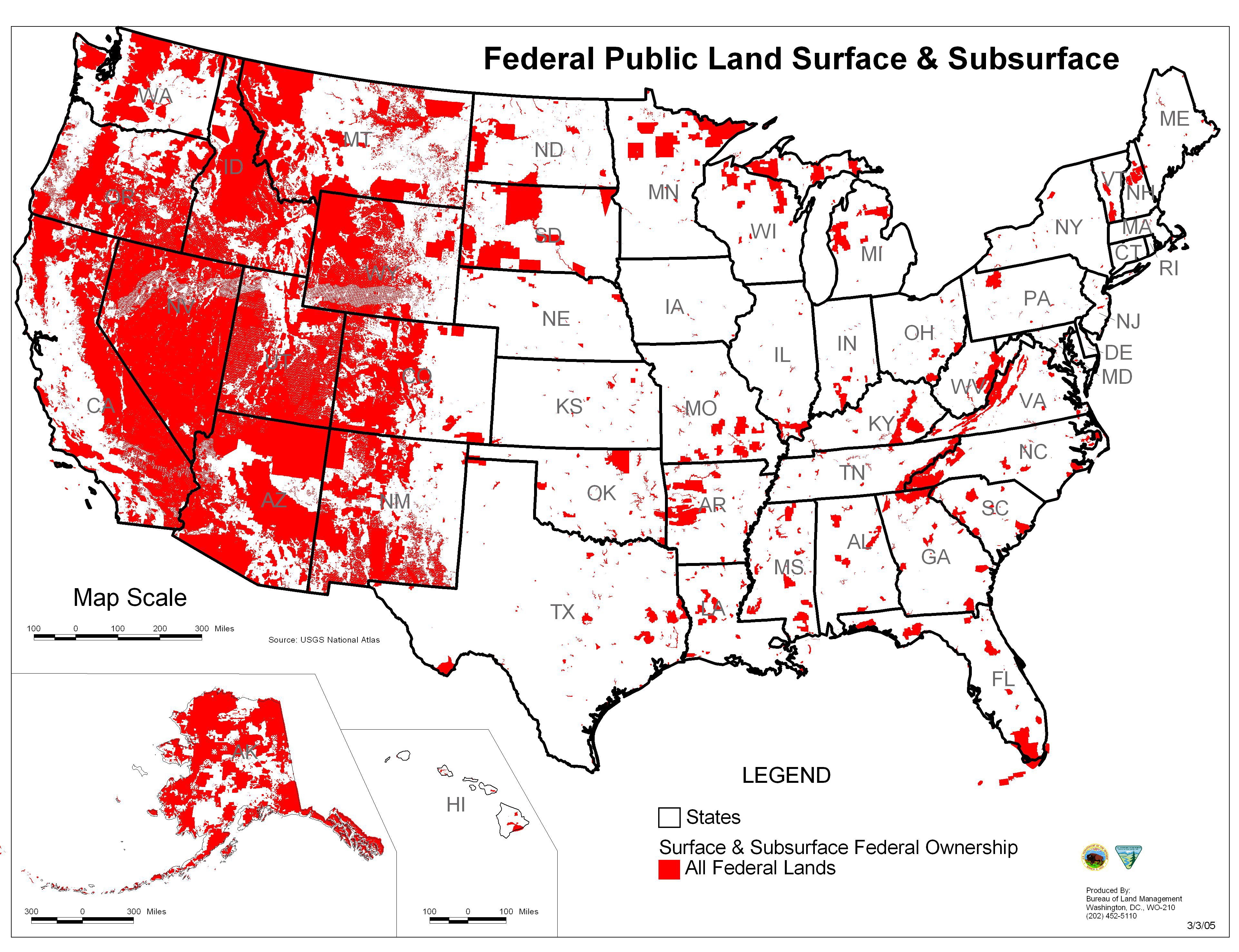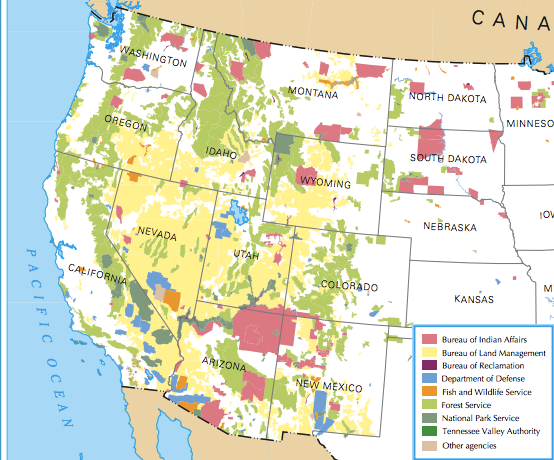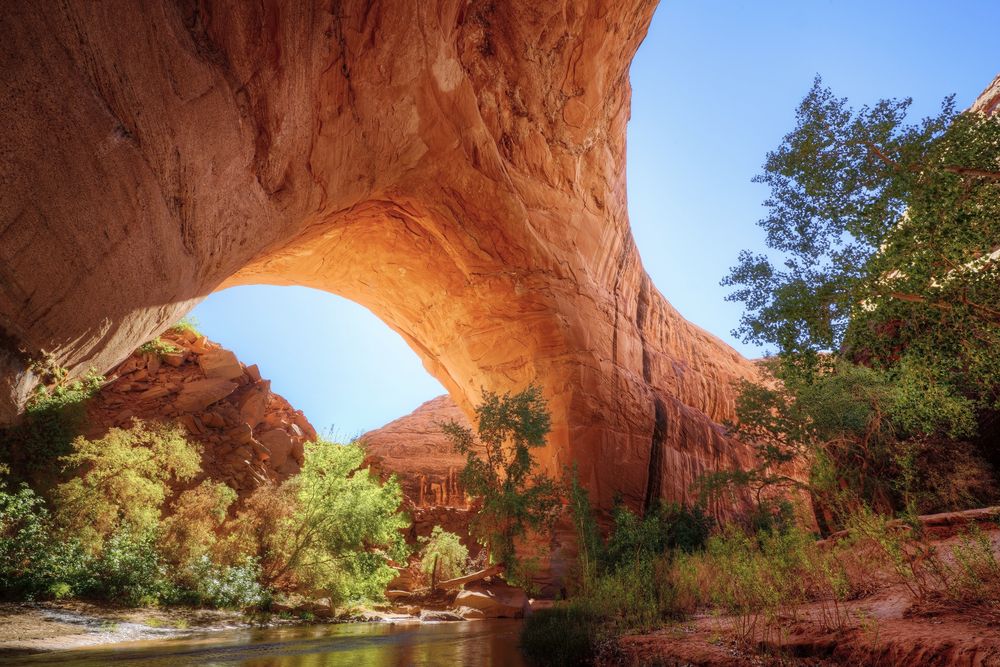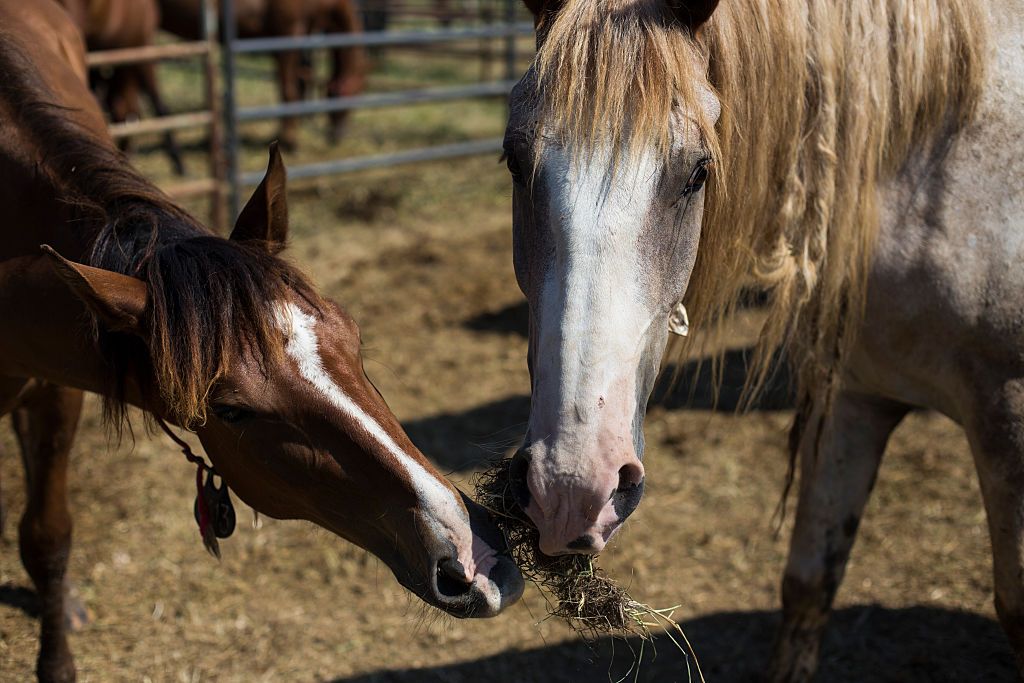
By all accounts, the militia that seized the headquarters of the federal Malheur National Wildlife Refuge near Burns, Oregon, isn’t terribly popular with locals. Most people aren’t fans of illegal armed takeovers, especially by outsiders.
That said, one of the militia’s core grievances does seem to resonate with many people in eastern Oregon. Specifically, they’re upset with the way the federal government manages the land it owns around the state. And it owns a lot: Federal agencies control 52.9 percent of Oregon land, including three-fourths of Harney County.
The Washington Post spoke with a number of locals around Burns. No one supported the militia’s nutty tactics, but many bristled at federal land management in this rural area. In recent decades, residents griped, new environmental rules around conservation and endangered species have limited ranching, grazing, and mining. “What people in Western states are dealing with is the destruction of their way of life,” said one.
This is a surprisingly common storyline in the West — though one that rarely gets press attention on the East Coast. Most of the time, it doesn’t descend into armed hooliganism. But since land control is at the root of many political disputes, it’s worth looking at how things got this way.
The decades-old clash over federal lands in the West
Start with the fact that the federal government owns a massive amount of land in the West, about half the acreage of the 11 westernmost states. That includes 53 percent of Oregon, 67 percent of Utah, and 81 percent of Nevada:

Map of all federally owned land in the United States. (Bureau of Land Management)
This is mainly a western issue, since the federal government only owns a smattering of parks and refuges east of the Mississippi. So why the disparity? James McCarthy, a professor of geography at Clark University, explained it to us.
For most of the 18th and 19th centuries, the US federal government gave away or sold much of the land it had acquired to settlers, farmers, veterans, railroad companies, and so on. (Land, note, that had ultimately been taken from Native Americans.) Politicians fully intended to give away the rest, too, eventually.
But that process slowed in 1891, when policymakers began worrying about a national timber famine and no longer trusted private companies to manage scarce natural resources. Among other things, they’d seen how timber barons in the Northeast had squandered their forests. So the feds decided to hold on to much of the land they still held.
And the vast majority of those holdings were in the still-unsettled West. Some of this was forest. Some of it was rangeland. Much of it was just… empty and unused.
Over time, policymakers began imposing new conditions on this land, usually to protect lands that had been degraded by unchecked resource exploitation. By the 1930s, many public rangelands were in poor shape due to overgrazing. So Congress passed the Taylor Grazing Act, making permits revocable. In 1976, Congress declared that federal land would stay in public hands indefinitely. In 1979, lawmakers required new environmental protections for territory controlled by the Bureau of Land Management.
These changes didn’t go over well with western ranchers and miners accustomed to using these lands however they saw fit. In the 1970s, the Nevada state legislature passed the Sagebrush Rebellion Act, declaring that federal public lands were now the property of the state. (This didn’t fly, legally.)

(Utah Public Radio)
As Christopher Ketcham recounts in Harper’s, Western cattle barons began engaging “in acts of defiance against the BLM, opening dirt tracks onto grazing allotments that had been closed, bulldozing new roads, overstocking their allotments, violating permit agreements, and refusing to pay grazing fees.”
The Sagebrush Rebellion ultimately fizzled out in the 1980s. Efforts to return the lands to the states died in Congress, in part because many Westerners opposed them. And the courts have repeatedly said that the federal government has the right to manage these lands. But the underlying tension persists in some areas today.
How federal lands are managed — and why it can be controversial
Federal land in the West can basically be divided into six broad categories, seen below:

Federal lands in the West (National Atlas)
Four of these categories are pretty well-defined: There are Native American reservations, handled by the Bureau of Indian Affairs. There are Department of Defense bases. There are the national parks, like Yellowstone or the Grand Canyon, handled by the National Park Service. There are the wildlife refuges, handled by the Fish and Wildlife Service.
The other two are a little messier. There are the national forests and grasslands overseen by the US Forest Service. And then there’s everything else — more than 264 million acres in all — handled by the Bureau of Land Management (BLM).
The Forest Service and BLM are supposed to manage their public lands for a variety of different uses, and this is where things can get tricky. They oversee loggers who want to access timber in public forests. They lease federal land to mining and drilling companies. They allow ranchers and cattle farmers access to rangelands. They set rules for recreational activities, like where all-terrain vehicles can go. And, increasingly, they’re supposed to pay attention to conservation and environmental issues, maintaining ecosystems or protecting endangered species.
It’s inevitable that some of those priorities will clash, and that’s where fights arise. “It all comes down to what you think the primary use of the land should be,” says John Freemuth, a professor of public policy and the senior fellow at the Cecil Andrus Center for Public Policy at Boise State University. “It’s a legitimate debate. Small western towns have been heavily dependent on resource side in the West, ranching, mining. But then in recent decades the federal government has placed a greater emphasis on the environmental side.”
You see this tension in Burns, Oregon, where locals argue that safeguards for endangered species like the sage grouse and spotted owl have limited grazing or development in the region.

What did I do? (Shutterstock)
Or another example: Back in 1994, local rancher Dwight Hammond wanted to allow his cattle into Malheur National Wildlife Refuge. When the Fish and Wildlife Service tried to build a fence to protect an irrigation ditch, Hammond interfered and was arrested. Hundreds of angry local ranchers came out to protest. (This is the same Hammond whose more recent conviction, for setting fires that spread to BLM land, sparked the current militia takeover of Malheur refuge.)
Sometimes these clashes are driven by corporate interests — ranchers or miners — looking to boost their profits. And it can often be hard to sympathize with people who are already getting a pretty sweet deal from the government. Take ranchers: federal grazing fees are currently set at about $1.35 per month for a cow and calf pair, compared with $8 to $23 to graze on private land, and the federal government spends about $500 million each year subsidizing public lands ranchers. Likewise, coal is still sold from federal lands at bargain prices, an effective subsidy to mining companies.
But, says Brian Allen Drake, an environmental historian at the University of Georgia, the anger over federal land use doesn’t just come from wealthy ranchers and miners looking for handouts. A number of rural Westerners view regulations on federal lands — say, limits on all-terrain vehicles in sensitive areas — as arbitrary and unpredictable, an imposition by out-of-touch East Coast bureaucrats.
“It’s animosity toward control from the outside, a feeling that you’re a modern colony of the East,” Drake says. “That’s been at play for a long time.” That attitude, too, is evident in Burns, a remote town that has faced economic decline in recent years, where residents cite federal regulations as a factor in their town’s woes.
It’s important to stress that this isn’t a universal view. Polls have found that most Westerners think the federal land agencies are doing a good job (though the vast majority of those respondents live in cities). Many, many Westerners support conservation and wildlife refuges and protecting wilderness — in part because well-managed public lands can be major economic drivers.
But it’s the clashes that get most attention. And tensions have run dangerously high in recent years. A recent investigation by High Country News documented dozens of threats and attacks against federal employees throughout the West since 2010. Two years ago, Cliven Bundy, a rancher in Nevada got into an armed standoff with the federal government over unpaid grazing fees because he was angry at BLM policies that limited his grazing rights.
Much of this is spurred on by incendiary rhetoric by pundits and politicians. “Right or wrong, some equate BLM’s law enforcement operations to the Gestapo of the World War II era,” is how Utah’s Garfield County Commissioner Leland Pollock put it to Congress in July.
Some states want to take back federal lands — but haven’t gotten far

Back to the states for you. (Shutterstock)
The antics in Oregon by Cliven Bundy’s son Ammon and his militia obviously aren’t going to resolve these long-simmering tensions. Bundy is currently demanding that the federal government turn over the entire 187,000-acre Malheur National Wildlife Refuge to ranchers, loggers, and miners. Even people sympathetic with his concerns agree that he’s the worst possible spokesman for this cause.
But some western states have been exploring a more peaceful approach: Why not turn the federal land over to the states? In 2012, Utah passed a bill demanding that the federal government do just that. This would require an act of Congress to pull off, but the idea has support from some leading GOP presidential candidates, including Marco Rubio and Ted Cruz.
The debate around land transfers is complex, but suffice to say that it’s not so clear cut. The Utah bill’s supporters, including state representative Ken Ivory, argue that states can be better stewards of their own lands than the federal government could — and they’d reap revenue by expanding oil and gas development. The corporate-backed American Legislative Exchange Council is very much in favor of reverting federal lands back to the states, precisely because states would look more favorably on mining and drilling.
But plenty of other Westerners don’t think it’s a good idea. Conservation and outdoors groups aren’t too keen on opening up new wilderness areas for drilling. And acquiring the lands could prove extremely costly to the states if they have to bear the costs of fighting wildfires (a tab the federal government currently picks up). It’s notable that even conservative Arizona rejected a similar ballot initiative by a 2-1 vote in 2012.
So is there any way to defuse tensions around federal lands?

Can we all get along. (Brittany Greeson/The Washington Post/Getty Images)
Freemuth, for his part, says there’s another possibility: closer collaboration between the federal government and the states on land issues.
In the past, he says, you could make a pretty good case that federal land managers were often way too high-handed. “Too many experts who think they know best. And if you don’t have the right people skills, you’ll just anger local people, no matter how well-intentioned you are.”
But, he adds, “the agencies have gotten much better at that — at getting managers to have the right skill mix to work with diverse set of folks that care about these lands.” He cites recent efforts to protect the sage grouse, a threatened bird in the West. The federal government collaborated with ranchers and industry to come up with conservation plans for the sage grouse in order to avoid having it officially listed as an endangered species (which would have triggered all sorts of sweeping rules affecting industry on BLM lands).
“So you see two paths here,” says Freemuth. “There’s one where there’s a lot of conflict, there’s hysteria coming from the Bundy crowd. And then there’s a path where people are trying to work together, to respect multiple uses, to create a community and space to express concerns. A lot of locals [in Burns, Oregon] are saying that violence is not what we want, we just want our uses and values to be listened to. So there’s a real opportunity there.”
Further reading
— A prime example of the trade-offs discussed above: The US Forest Service is currently debating whether to open western Colorado wilderness for coal mining.
— The Oregonian continues to have the best reporting on the Oregon militia stand-off.
— The Congressional Research Service has lots of data and detail on federal land ownership. See here and here.
— Last year in Harper’s, Christopher Ketcham explored the push to revert federal lands to the states, what he called “The Great Republican Land Heist”
— High Country News’ investigation into threats and violence against federal employees in the West is worth reading, as is this forum they hosted asking experts for their thoughts on the roots of this conflict.
via : Vox – Policy & Politics








